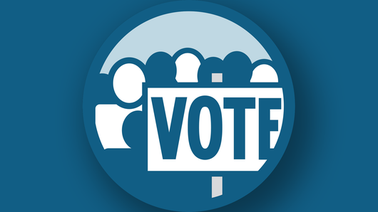- Level Foundation
- Ratings
- Course by Harvard University
- Total students 3,494 enrolled
-
Offered by

About
Public opinion has a powerful yet inexact influence on elected officials. Politicians risk their careers if they ignore it, yet its power is not easy to capture nor quantify. This course will look at how political parties, campaigns, social movements, special interests, and the news media all play a role in influencing public opinion.
We'll examine the attributes of public opinion, how polling attempts to measure those attributes, and how they impact the decisions of policymakers. We'll address the unique features of the two-party system in the U.S., how those parties realign themselves in response to shifting norms, and how their candidates are vetted behind the scenes before the start of a campaign.
Outside of the formal organization of party politics, groups representing various interests aim to affect a change through the political system. Special interest groups resemble political parties, but while parties try to influence elections, groups concentrate on gaining influence over policies. Meanwhile, social movements take place outside these established institutions, often in the form of protest demonstrations and rallies. All of these interests are filtered through the news media, which plays a critical role in shaping people's images of politics.
This course will help you to understand how these forces shape American politics, from "invisible primaries" to election day and beyond.
What you will learn
- The theory and practice of polling
- The nature of today’s Republican and Democratic parties
- How U.S. elections differ from those of other democracies
- Key points of the 2016 Trump-Clinton race
- Why social movements succeed or fail
- Why some special interests are more influential than others
- How the news system has changed in recent decades
- The political consequences of a decentralized news media
Skills you learn
Syllabus
Week 1: Public Opinion
This session will examine the attributes of public opinion and explore its impact on the decisions of policymakers—a subject that has been closely studied by political scientists.We will also explain the theory and practice of polling, which has become the primary method of assessing public opinion.
Week 2: Political Parties
Unlike most democracies, the United States has a two-party system, the Republicans and the Democrats. This session will examine this feature of the U.S. party system and will explain the nature of today’s Republican and Democratic parties. Party realignments will be a focus of the session.
Week 3: Campaigns & Elections
This session will begin with a look at the presidential nominating process, which includes what’s called the “invisible primary” along with the primaries and caucuses. The focus will then shift to the general election campaign, which centers on the battleground states—those that are competitive enough to be won by either candidate.
Week 4: Political Movements
This session will examine the factors affecting the success of political movements, such as their ability to attract the resources required for sustained advocacy. Four cases will be used to illustrate the significance of these factors: the black civil rights movement, the Vietnam War protest movement, the Tea Party movement, and Occupy Wall Street.
Week 5: Interest Groups
This session will examine interest groups, focusing on group influence and why some interests are more influential and fully organized than others. The Dodd-Frank Act of 2010, enacted in response to the economic downturn that began in 2008, will be used to illustrate key points about group influence.
Week 6: News Media
This session will examine the news media’s influence on politics, focusing on the extraordinary changes that have taken place in the news system in recent decades and on the consequences of those changes. The U.S. news system was once dominated by the television broadcast networks and local newspapers. Today, they have to compete with cable and Internet outlets, many of which operate by a different standard. News coverage of Trump’s and Clinton’s 2016 presidential campaigns will be used to illustrate key points.
Auto Summary
Discover the dynamic landscape of American politics with the course "Citizen Politics in America: Public Opinion, Elections, Interest Groups, and the Media." This foundational course, available on edX, delves into how public opinion shapes the decisions of elected officials and the multifaceted roles that political parties, campaigns, social movements, special interest groups, and the media play in this process. Learners will explore the intricacies of public opinion, the methods used to measure it through polling, and its influence on policy-making. The course offers a deep dive into the U.S. two-party system, examining how parties adapt to changing norms and how candidates are prepped for campaigns. Beyond party politics, the course highlights the efforts of special interest groups to sway policy and the impact of social movements that operate outside traditional political institutions. The role of the news media in shaping public perceptions and political images is also a critical focus, providing insights into the media's influence from the early stages of political campaigns to election day and beyond. Ideal for those at the foundation level, this course is perfect for anyone interested in understanding the forces that shape American politics. Enhance your knowledge and stay informed about the political landscape with a professional subscription to this comprehensive course on edX.

Thomas E. Patterson


